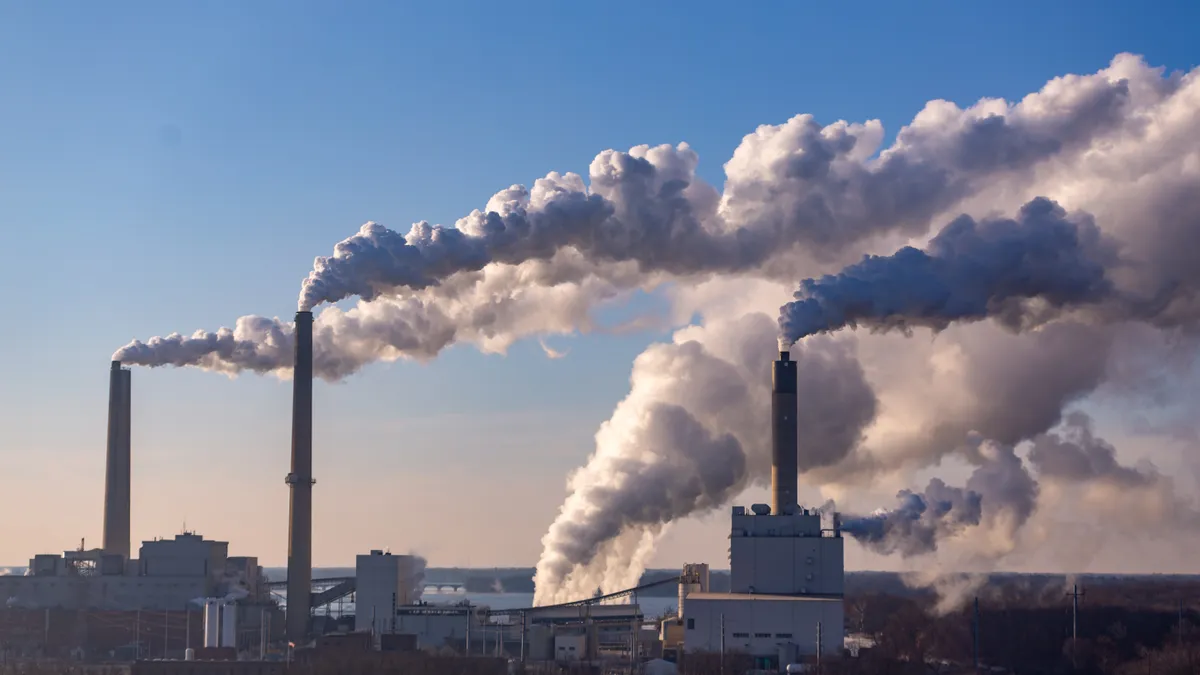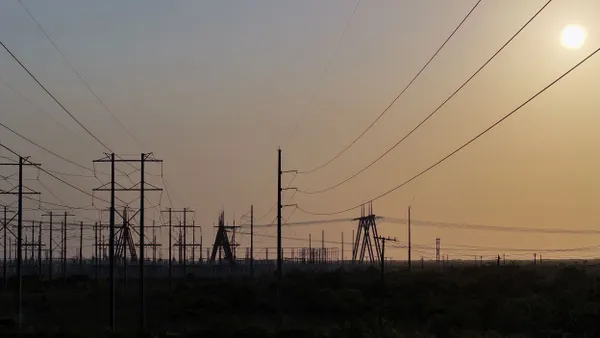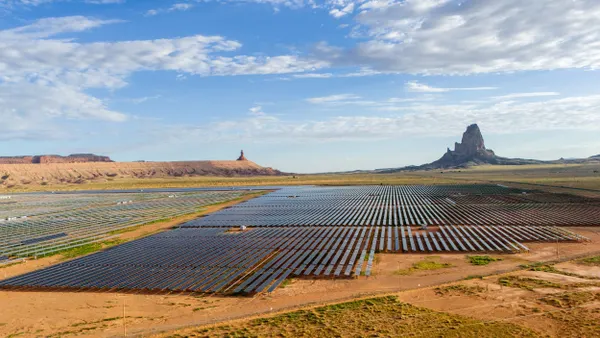Dive Brief:
-
The Environmental Protection Agency on Thursday proposed greenhouse gas emissions limits for coal-, gas- and oil-fired power plants, with initial requirements beginning in 2030 for coal-fired generators and 2032 for gas-fired units.
-
The proposed limits vary by the size of the plant, how often they run, how long they are expected to be operating, and whether they are new or existing, a combustion turbine or a utility boiler. The limits can be met by highly efficient operations, carbon capture and sequestration, called CCS, co-firing natural gas for coal units, and with “green” hydrogen for gas generators, according to the proposal.
-
The proposal would spur 22 GW of coal-fired capacity to retire and 24 GW of natural gas-fired capacity to be built, including 11 GW of capacity co-fired with clean hydrogen, from 2023 to 2035, according to the agency. The proposal, which includes a process for allowing power plants to exceed GHG emissions limits if they are needed for grid reliability, will have little effect on reliability, the EPA said.
Dive Insight:
The proposed rule sets GHG emissions limits for new gas-fired combustion turbines, existing coal, oil and gas-fired steam generating units, and certain existing gas-fired combustion turbines. The limits phase in over the next decade.
The proposal is based on proven and cost-effective technology, EPA Administrator Michael Regan, said Wednesday during a press briefing.
With requirements starting in the 2030s, the proposal provides time for the development of green hydrogen infrastructure and CCS, EPA staff said. The Infrastructure Investment and Jobs Act and the Inflation Reduction Act provide significant financial support for those technologies, the agency said.
The EPA estimates it will cost power plant owners $10 billion to $14 billion to meet the proposed emissions limits, depending on the discount rate. It expects the proposal would increase retail electricity prices by 0.2% in 2035 on average and reduce coal-fired generation by 28% by 2035 compared to a business as usual scenario.
It would cut 617 million metric tons of carbon dioxide through 2042 along with tens of thousands of tons of particulate matter, sulfur dioxide and nitrogen oxides, helping to produce up to $5.9 billion in annual health and other benefits through 2042, according to the agency.
The proposal requires coal-fired power plants that intend to operate past 2039 to install CCS that captures 90% of carbon emissions. Coal plants that plan to retire by 2035 and run at no more than a 20% capacity factor and units that will be shuttered before 2032 don’t face GHG emissions limits.
Gas-fired combustion turbines larger that 300 MW and with at least a 50% capacity factor have two compliance options: CCS with 90% carbon capture by 2035, or co-firing of 30% low-GHG hydrogen beginning in 2032 and co-firing 96% starting in 2038, according to the agency.
The EPA said it developed the proposal in consultation with the Department of Energy, the Federal Energy Regulatory Commission, the power sector and other stakeholders.
The agency said it is confident the proposal can be implemented without hurting grid reliability.
“These proposed rules include significant design elements that are intended to allow the power sector continued resource and operational flexibility, and to facilitate long-term planning during this dynamic period,” the EPA said.
The EPA will take comment on the proposed rule for 60 days after it is published in the Federal Register.
Groups, senators respond
The Edison Electric Institute engaged constructively with the EPA on the proposal in the last 18 months, according to Tom Kuhn, the president of the trade group for investor-owned utilities.
The engagement centered on three areas, including aligning compliance deadlines with existing clean energy transition plans, Kuhn said in a statement. The trade group also focused on compliance flexibility and the role gas-fired power plants play in integrating renewable energy onto the grid and maintaining reliability, he said.
Carbon-free generating sources can support grid reliability, according to RMI, a nonprofit advocacy organization.
“There are many options for cost-effectively supporting a reliable electric grid without relying on uncontrolled fossil fuel power plants, which can fail when they are needed most during extreme weather and cause outsized health burdens on disadvantaged communities,” Mark Dyson, RMI Managing Director for Carbon-Free Electricity, said. “Grid operators already have significant experience in lowering costs and supporting reliability with carbon-free resources.”
National Rural Electric Cooperative Association CEO Jim Matheson said the proposal undermines grid reliability.
“We’re concerned the proposal could disrupt domestic energy security, force critical always-available power plants into early retirement, and make new natural gas plants exceedingly difficult to permit, site, and build,” he said.
The proposal will increase power plant retirements, according to the Electric Power Supply Association, a group representing power plant owners.
“These aggressive rules will undoubtedly drive up energy costs and lead to a substantial number of power plant retirements when experts have warned that we are already facing a reliability crisis due to accelerated retirements of dispatchable resources,” Todd Snitchler, EPSA president and CEO, said.
America’s Power, a trade group that advocates for coal-fired power, said the proposal could lead some power plants to retire early.
The proposal raises a number of critical legal questions, including whether EPA has the authority to force the use of technologies that are not economically or technically feasible for widespread use,” Michelle Bloodworth, the group’s president and CEO, said.
Leaders of the Senate Energy and Natural Resources Committee blasted the proposal.
“This administration is determined to advance its radical climate agenda and has made it clear they are hellbent on doing everything in their power to regulate coal and gas-fueled power plants out of existence, no matter the cost to energy security and reliability,” Sen. Joe Manchin, D-W.Va. and committee chairman, said. He plans to oppose all EPA nominees until the administration ends its “government overreach,” he said.
Sen. John Barrasso, R-Wyo. and ranking member, said the proposed rules would kill jobs in Wyoming and raise energy costs across the country.














